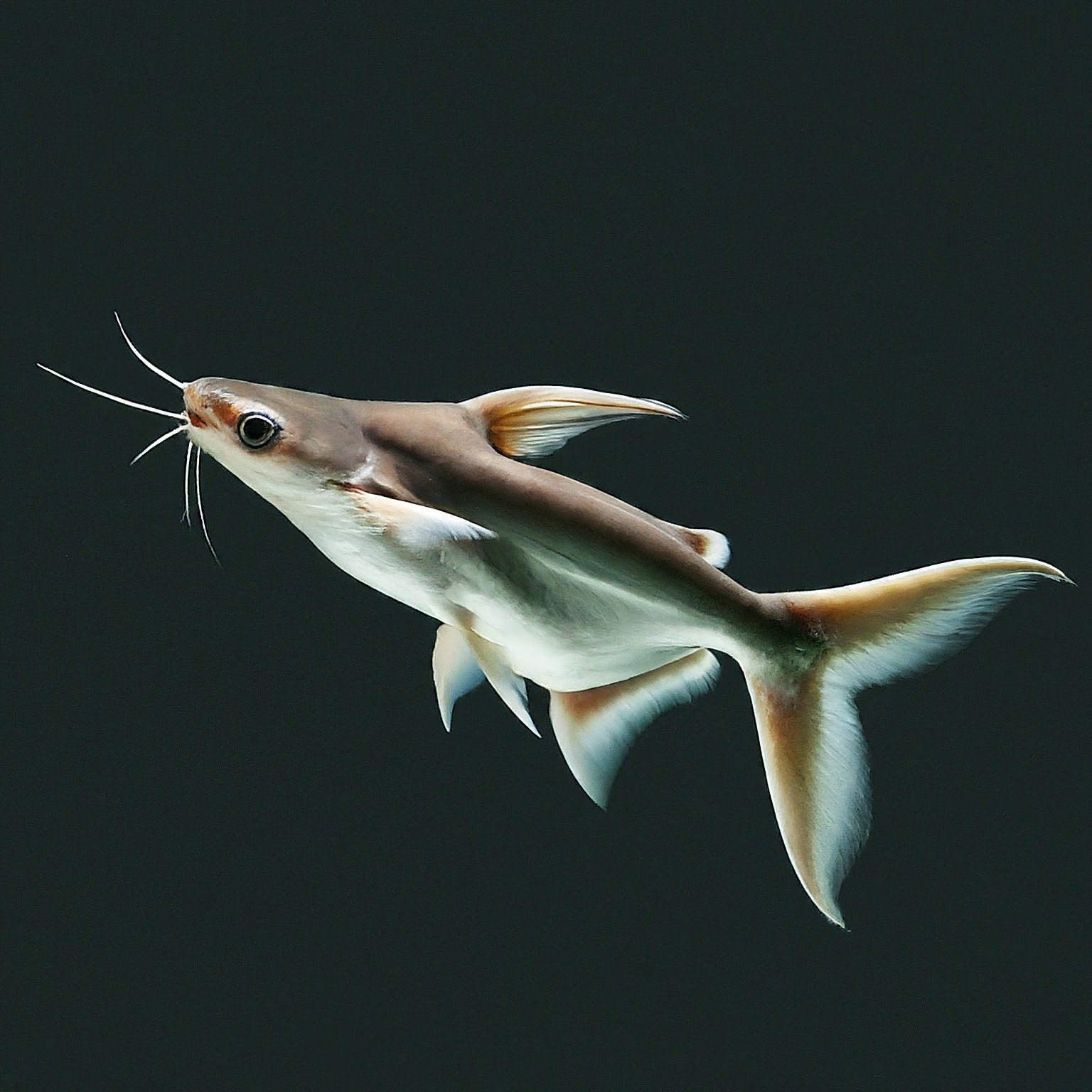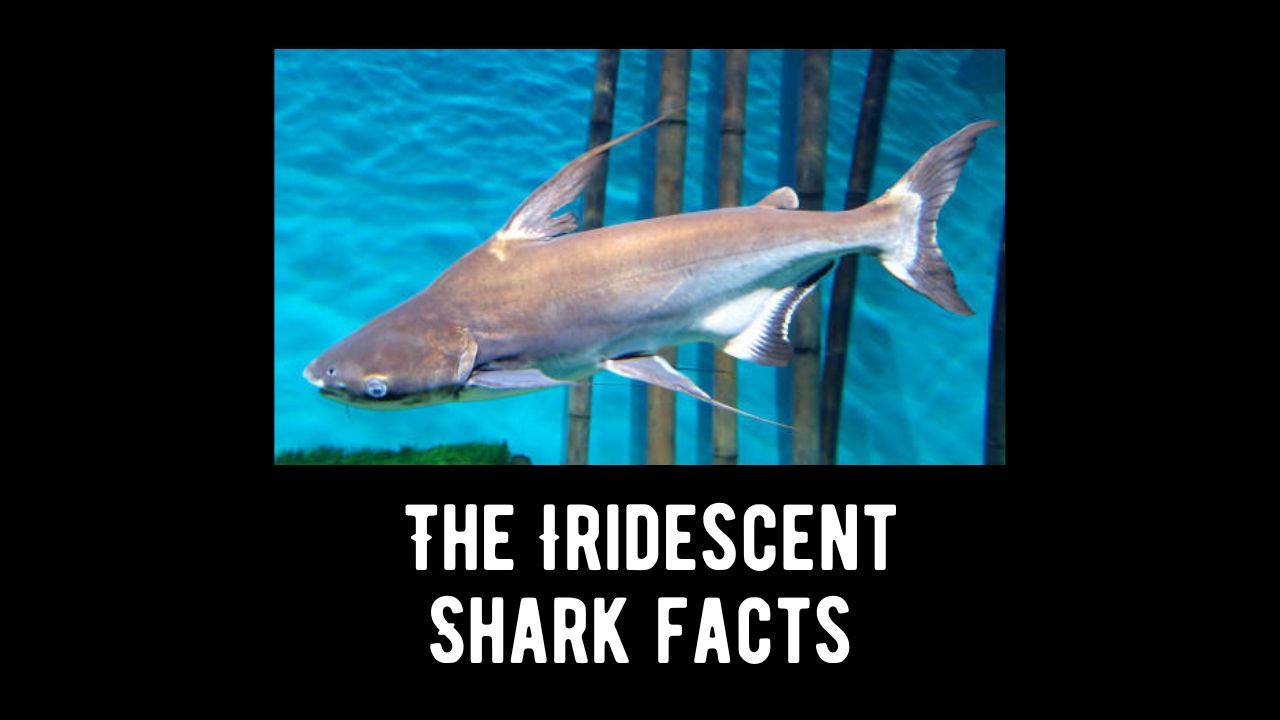The Iridescent Shark, scientifically known as Pangasianodon hypophthalmus, is a unique and captivating freshwater fish species that has gained popularity among aquarium enthusiasts. Also known as the Pangasius Catfish, this species requires specific care to thrive in captivity. In this comprehensive guide, we will explore various aspects of keeping and caring for the Iridescent Shark, including its habitat, diet, size, tank setup, compatibility with other fish, and common challenges in its maintenance.
The Iridescent Shark, also known as the Iridescent Shark Catfish or Pangasius Catfish, isn’t actually a shark but a large freshwater catfish species native to Southeast Asia. Despite its name and shark-like appearance, it belongs to the Pangasiidae family, distinct from true sharks.
1. Pangasianodon hypophthalmus (Mekong Catfish, Swai): This catfish is native to Southeast Asia and known for its iridescent sheen, especially when young. However, it’s not a true shark but belongs to the catfish family
2. Pangasius sanitwongsei (Giant Pangasius, Siamese Giant Catfish): Similar to the previous one, this Southeast Asian catfish also shows iridescence and is sometimes marketed as “iridescent shark.” However, it’s also not a true shark.
Appearance:
- Large and elongated: Adults reach up to 130 cm (4.3 ft) in length and can weigh up to 44 kg (97 lb).
- Iridescent sheen: Young individuals exhibit a striking iridescent shimmer, giving them their name. However, adults are uniformly greyDark fins: Their fins are dark grey or black.
- Black stripes (juveniles): Juveniles have a distinctive black stripe along the lateral line and another below it.
- Scaleless: Unlike true sharks, they lack scales and have smooth, leathery skin.
Habitat and Behavior:
- Freshwater dweller: Found in the Mekong basin and Chao Phraya River in Southeast Asia.
- Bottom feeder: Primarily scavenges for food on the river bottom, feeding on algae, zooplankton, crustaceans, and small fish.
- Migratory: Large adults undertake long-distance migrations upstream to spawn in specific areas.
- Peaceful: Considered a peaceful and non-aggressive species towards humans.

Overview:
Appearance:
The Iridescent Shark is characterized by its sleek, silver body with a distinctive forked tail. It possesses a smooth, scaleless skin that reflects light, giving it an iridescent appearance. Juveniles often exhibit a more pronounced iridescence, which may diminish as they age.
Size:
In the wild, Iridescent Sharks can grow quite large, reaching lengths of up to four feet or more. However, in captivity, they usually attain a smaller size, typically around 12 to 24 inches, depending on factors such as tank size and diet.
Lifespan:
With proper care, Iridescent Sharks can live for several years. In captivity, a well-maintained environment and a balanced diet contribute to their overall health and longevity.
Tank Setup:
Tank Size:
Due to their potential size, it’s crucial to provide a spacious tank for Iridescent Sharks. A minimum tank size of 150 gallons is recommended for a single adult. Larger tanks of 200 gallons or more are preferred for a group of these fish.
Water Parameters:
Maintaining appropriate water parameters is essential for the well-being of Iridescent Sharks. They thrive in tropical freshwater conditions with temperatures ranging from 75 to 82 degrees Fahrenheit (24 to 28 degrees Celsius). The pH level should be kept between 6.5 and 7.5, and the water hardness should be moderate.
Filtration:
Effective filtration is paramount for Iridescent Sharks, as they are sensitive to poor water quality. A powerful filtration system capable of handling the size of the tank and the bio-load of the fish is necessary. Regular water changes are also essential to keep ammonia and nitrite levels in check.
Substrate and Decor:
Provide a sandy substrate to mimic the natural riverbed habitat of Iridescent Sharks. Additionally, incorporate hiding spots and structures like driftwood or PVC pipes to offer shelter and reduce stress.
Diet:
Feeding Habits:
Iridescent Sharks are omnivores with a predominantly carnivorous diet. In the wild, they consume small fish, crustaceans, and insects. In captivity, a well-balanced diet should include high-quality sinking pellets, live or frozen foods like bloodworms and brine shrimp, and occasional vegetable matter.
Feeding Frequency:
Feed adult Iridescent Sharks once or twice a day. Be mindful not to overfeed, as excess food can lead to water quality issues. Juveniles may require more frequent feedings.
Compatibility:
Tank Mates:
Iridescent Sharks are generally peaceful but may become territorial as they grow. Compatible tank mates include other large, non-aggressive fish that can withstand their size. Avoid keeping them with smaller or more timid species that may become stressed or harassed.
Solitary or Group:
While juveniles may tolerate each other, adult Iridescent Sharks can become territorial. If keeping multiple individuals, provide ample space and monitor for signs of aggression. Some aquarists prefer to keep a single Iridescent Shark to prevent territorial disputes.
Challenges:
Health Issues:
Iridescent Sharks are susceptible to common freshwater fish diseases. Monitor for signs of illness, such as changes in behavior, appetite, or appearance. Quarantine new additions to prevent introducing diseases to the main tank.
Tank Size Limitations:
A common challenge is underestimating the space requirements of Iridescent Sharks. Inadequate tank size can stunt their growth, leading to health issues. Always plan for the potential size these fish can reach.
Compatibility Concerns:
Choosing compatible tank mates is crucial. Avoid aggressive or overly territorial species that may intimidate or harm the Iridescent Shark. Monitor the social dynamics within the tank.
Interesting Facts:
- Often marketed as “swai” in the food industry.
- Popular aquarium fish, but their large size requires spacious tanks.
- Can breathe air for short periods, allowing them to survive in low-oxygen environments.
- Listed as “Near Threatened” by the IUCN due to habitat loss and overfishing.
Conclusion:
Successfully keeping and caring for Iridescent Sharks in captivity requires commitment, proper planning, and attention to their specific needs. Aquarists can enjoy the presence of these captivating fish by providing a suitable environment, a well-balanced diet, and compatible tank mates. Regular monitoring, prompt intervention in case of health issues, and responsible fishkeeping practices contribute to the overall well-being and longevity of Iridescent Sharks in the aquarium setting.
Frequently Asked Questions About Iridescent Sharks:
1. Q: How large do Iridescent Sharks grow in captivity?
A: In captivity, Iridescent Sharks typically grow to a size of 12 to 24 inches, depending on factors such as tank size, diet, and overall care. Their potential size can be influenced by the environment provided.
2. Q: What is the recommended tank size for keeping Iridescent Sharks?
A: For a single adult Iridescent Shark, a minimum tank size of 150 gallons is recommended. Larger tanks of 200 gallons or more are preferred, especially if keeping multiple individuals.
3. Q: Are Iridescent Sharks suitable for community tanks?
A: While generally peaceful, Iridescent Sharks can become territorial as they grow. Compatible tank mates include other large, non-aggressive fish. Avoid smaller or timid species that may be stressed or harassed.
4. Q: What should I feed my Iridescent Shark?
A: Iridescent Sharks are omnivores with a predominantly carnivorous diet. A well-balanced diet should include high-quality sinking pellets, live or frozen foods like bloodworms and brine shrimp, and occasional vegetable matter.
5. Q: How often should I feed my Iridescent Shark?
A: Adult Iridescent Sharks should be fed once or twice a day. Juveniles may require more frequent feedings. It’s essential not to overfeed to prevent water quality issues.
6. Q: Can I keep multiple Iridescent Sharks in the same tank?
A: While juveniles may tolerate each other, adult Iridescent Sharks can become territorial. If keeping multiple individuals, provide ample space and monitor for signs of aggression.
7. Q: What are common health issues for Iridescent Sharks?
A: Iridescent Sharks are susceptible to common freshwater fish diseases. Regular monitoring for changes in behavior, appetite, or appearance is crucial. Quarantine new additions to prevent disease spread.
8. Q: Can Iridescent Sharks be kept in smaller tanks when they are young?
A: While juveniles may initially be kept in smaller tanks, it’s essential to plan for their potential size and provide a larger tank as they grow. Inadequate space can lead to stunted growth and health issues.
9. Q: Do Iridescent Sharks have specific water parameter requirements?
A: Iridescent Sharks thrive in tropical freshwater conditions with temperatures between 75 to 82 degrees Fahrenheit and a pH level between 6.5 and 7.5. Maintain moderate water hardness for their well-being.
10. Q: How can I prevent territorial disputes among Iridescent Sharks in the same tank?
A: To prevent territorial disputes, provide ample space with hiding spots and monitor for signs of aggression. Some aquarists prefer keeping a single Iridescent Shark to avoid territorial issues.
